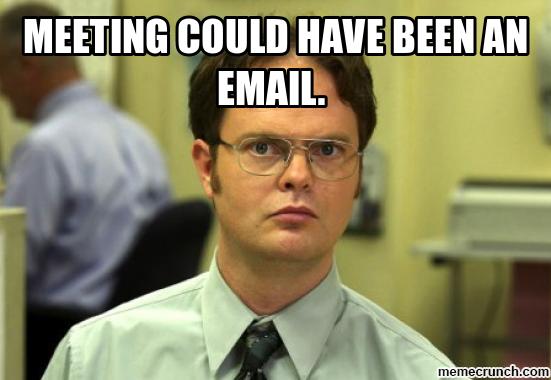
Between daily scrums, planning sessions and retrospectives, emergency meetings, training sessions and virtual team-building events, it’s no wonder that so many remote-working technologists are suffering from a relatively new malady spawned by the pandemic called “Zoom fatigue.”
What is it about online meetings that makes us feel so tired and drained when compared to traditional in-person meetings? For one thing, staring at the camera and numerous faces on the screen (including your own) simultaneously is similar to intensive multitasking, explained Dr. Steven Hickman, executive director of the Center for Mindful Self-Compassion and associate clinical professor at UCSD.
The human brain is an energy hog, but it uses even more glucose during challenging mental tasks such as multitasking, Hickman added.
Now that we know that online meeting exhaustion is real, here are five ways to preserve energy for long days of remote work. You can overcome Zoom fatigue!
Find the Right Meeting Cadence
Going overboard with online meetings is normal when a team initially transitions to remote. But just because you can have an online meeting doesn’t mean you should, noted Stephanie Slocum, an experienced structural engineer and founder of Engineers Rising LLC.
How many meetings a day is too many? Compare your frequency to this study of how software developers and engineers spend their time. If you are spending more than 14 percent of your time in meetings, that’s way too many.
If the team had good in-person chemistry and communication before switching to remote, challenge them to shorten, consolidate or reduce meetings by sending out an agenda ahead of time. Let the team decide if an online meeting is necessary, and if so, how long the meeting should be.
“If the team isn’t communicating well, more online meetings won’t help,” Slocum pointed out. “Determine the root cause of the problem so you can focus on more effective solutions.”
Suggest Other Media
Being on a video call requires more attention and mental processing than traditional face-to-face meetings in conference rooms. That’s because 93 percent of communication is non-verbal; during a typical video call, the human brain will attempt to “fill in the blanks” by trying to decipher body language, tone and non-verbal cues. Multiply that by dozens of participants over many hours, and you’re on track for mental exhaustion.
Exhaustion, in turn, has consequences. It can lead to technologists working longer hours as they try to meet their goals, stifle creativity and beneficial interactions, and even lead to lax security.
Fortunately, balancing out your energy levels is a matter of simple steps, at least at first. Conserve energy by turning off your video and microphone, unless it’s required that you speak and be seen. Or suggest that routine information be shared via email, text, recorded asynchronous video messages or even conference calls, Slocum recommended. Or as the popular meme goes:

Skip the meeting and let the team review non-critical updates when it’s convenient for them, via email or messaging; meanwhile, you’ll be amazed at how much work you can do in an hour when you’re not interrupted.
Take Frequent Breaks
The ways to make in-person meetings more productive (and less taxing) are backed by science and Scrum, yet we seem to be forgetting that these best practices also apply to online meetings. For instance, meetings should never be scheduled back-to-back, and attendees should be able to take frequent breaks (and encouraged to stand-up or walk around the room). Plus, too many meetings take an hour or longer, when 20 minutes will do.
“Try to adjust your position or soften your gaze by switching from Gallery to Speaker view, if its allowed,” Hickman recommended. “Also, resist the temptation to check email or text messages or perform tasks on a second monitor during online meetings, as multitasking will only make things worse.”
Introduce Quiet time
Determine what time of day your team accomplishes more. Do they generally use mornings to fulfill important tasks such as writing or improving code? Recommend scheduling meetings during times when people feel like slowing down and communicating.
Many large corporations such as Intel and IBM have instituted something called “quiet time,” which is a “meeting-free” block of time dedicated to specific projects and activities.
Affording your newly remote teammates more time to complete critical tasks will also help them adjust and cope with the distractions of working from home.
Sit One Out
Balancing work and family responsibilities during the pandemic has made self-care a necessity.
“People are not machines,” cautioned Slocum. Step away from your home office or ask if you can skip a meeting if you’re feeling tired or overwhelmed. Carving out a little “me time” can make you a better remote employee and more empathetic teammate. So why not give yourself a break?


